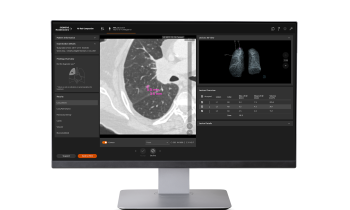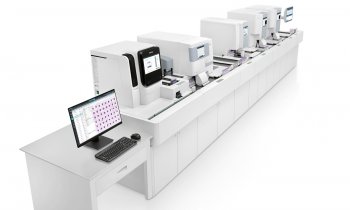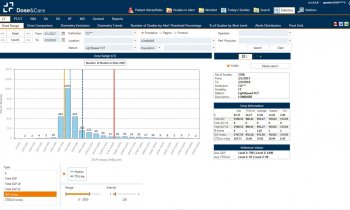Performance measurement to improve quality
By Karen H Timmons, President and Chief Executive Officer of Joint Commission International, and Maureen Connors Potter RN BS MS, Executive Director International Accreditation at Joint Commission International
Joint Commission International (JCI) accredited hospitals have long expressed an interest in performance measurement to support quality improvement efforts and to provide a valid base for local, national, and international comparisons.
In response to this request, JCI has introduced the Hospital Quality Indicator project. The implementation of a limited number of standardised indicators began in January 2006.
This initiative focuses on data collection for seven standardised performance indicators (measures) currently in use in the United States (Table 1). The purpose of this project is to fully understand the operational issues uniquely associated with international implementation. During 2006, measures will be assessed for interpretability, applicability/usefulness to the international community, feasibility of data collection, data collection effort, and overall resource use.
In addition to indicator evaluation, assessment of the potential limitations related to electronic data transmission, preferences for data feedback mechanisms, expectations regarding support services, and data use by JCI in accreditation activities will also be addressed. Evaluation findings will be used to assist in planning for a voluntary automated standardised indicator set.
The benefits of participation in the project are three-fold:
• Accredited organisations have the opportunity to participate in and shape the future of JCI accreditation requirements;
• It provides an early opportunity for international benchmarking; and
• It supports hospital compliance with JCI standards.
Accredited hospital organisations, which volunteer to participate, collect indicator (measure) data using tools provided by JCI. These tools include the data dictionary, data elements, and Indicator Information Forms (IIFs) for the seven indicators (measures) that are included during the first year of the JCI Hospital Quality Indicator project.
Joint Commission International (JCI) has also developed International Patient Safety Goals, which were adapted from the Joint Commission’s National Patient Safety Goals (Table 2). Since January 2006, JCI has surveyed international hospitals for compliance with the goals as a way to evaluate the relevance and feasibility of the goals for international hospitals and whether there are any unique adaptation requirements for individual countries. The survey findings currently do not affect the hospitals’ accreditation decisions. The results of surveys conducted in the first months of 2006 will be used to decide whether to proceed with full implementation of the International Patient Safety Goals as accreditation requirements for 2007.
For further information, organisations can contact Maureen Potter, executive director, International Accreditation, JCI, at mpotter@jcrinc.com
Table 1:
INDICATORS
AMI-: Aspirin at Arrival
Acute Myocardial infarction (AMI) patients without aspirin contraindications who receive aspirin within 24 hours before or after hospital arrival.
AMI-: Aspirin Prescribed at Discharge
Acute Myocardial infarction (AMI) patients without aspirin contraindications who are prescribed aspirin at discharge.
AMI-:Angiotensin Converting Enzyme Inhibitor (ACEI) or Angiotensin Receptor Blocker (ARB) for Left Ventricular Systolic Dysfunction (LVSD)
Acute Myocardial infarction (AMI) patients with left ventricular systolic dysfunction (LVSD) and without both angiotensin converting enzyme inhibitor (ACEI) and angiotensin receptor blocker (ARB) contraindications who are prescribed an ACEI or ARB at hospital discharge.
AMI-: Beta Blocker Prescribed at Discharge
Acute myocardial infarction patients (AMI) without beta blocker contraindications who are prescribed a beta blocker at discharge
AMI-: Beta Blocker at Arrival
Acute myocardial infarction patients (AMI) without beta blocker contra-indications who are prescribed a beta blocker within 24 hours after hospital arrival.
HF-: Left Ventricular Function (LVF) Assessment
Heart failure patients with documentation in the hospital record that left ventricular function (LVF) was assessed before arrival, during hospitalisation, or is planned for after discharge.
HF-: Angiotensin Converting Enzyme Inhibitor (ACEI) or Angiotensin Receptor Blocker (ARB) for Left Ventricular Systolic Dysfunction (LVSD)
Heart failure (HF) patients with left ventricular systolic dysfunction (LVSD) and without both angiotensin converting enzyme inhibitor (ACEI) and angiotensin receptor blocker (ARB) contraindications who are prescribed an ACEI or ARB at hospital discharge.
Table 2:
2006 International Patient Safety Goals
Goal: Identify Patients Correctly
Protocol 1: Use at least two (2) ways to identify a patient when giving medicines, blood, or blood products; taking blood samples and other specimens for clinical testing; or providing any other treatments or procedures. The patient’s room number cannot be used to identify the patient.
Goal: Improve Effective Communication
Protocol 2: Implement a process/procedure for taking verbal or telephone orders, or for the reporting of critical test results, that requires a verification “read-back” of the complete order or test result by the person receiving the information.
Note: Not all countries permit verbal or telephone orders.
Goal: Improve the Safety of High-Alert Medications
Protocol 3: Remove concentrated electrolytes (including, but not limited to, potassium chloride, potassium phosphate, sodium chloride >0.9%) from patient care units.
Goal: Eliminate wrong-site, wrong-patient, wrong-procedure surgery
Protocol 4: Use a checklist, including a “time-out” just before starting a surgical procedure, to ensure the correct patient, procedure, and body part.
Note: Hospitals in many countries have downloaded the Universal Protocol and are using it. Because the Universal Protocol is a set of three complementary, evidence-based practices that together will prevent wrong-site surgery, please note that protocols 4 through 6 of these International Patient Safety Goals are the same as the requirements for the Universal Protocol.
Protocol 5: Develop a process or checklist to verify that all documents and equipment needed for surgery are on hand and correct and functioning properly before surgery begins.
Protocol 6: Mark the precise site where the surgery will be performed. Use a clearly understood mark and involve the patient in doing this.
Goal: Reduce the risk of health care-acquired infections.
Protocol 7: Comply with current published and generally accepted hand hygiene guidelines.
Note: This should recognise that not all countries have an agency that is equivalent to the Centres for Disease Control and Prevention (CDC) or may not recognise guidelines of the U.S. CDC.
Goal: Reduce the risk of patient harm resulting from falls.
Protocol 8: Assess and periodically reassess each patient’s risk for falling, including the potential risk associated with the patient’s medication regimen, and take action to decrease or eliminate any identified risks.
01.03.2006










